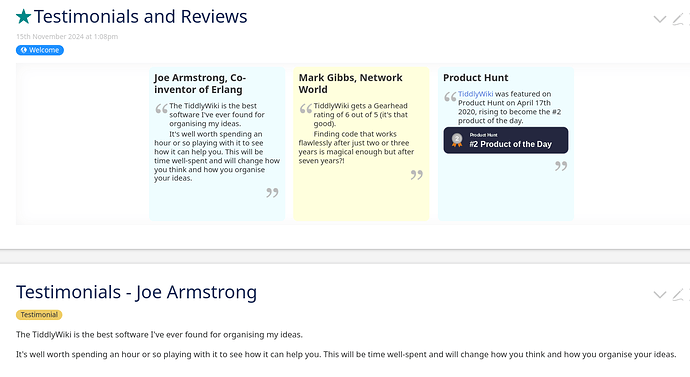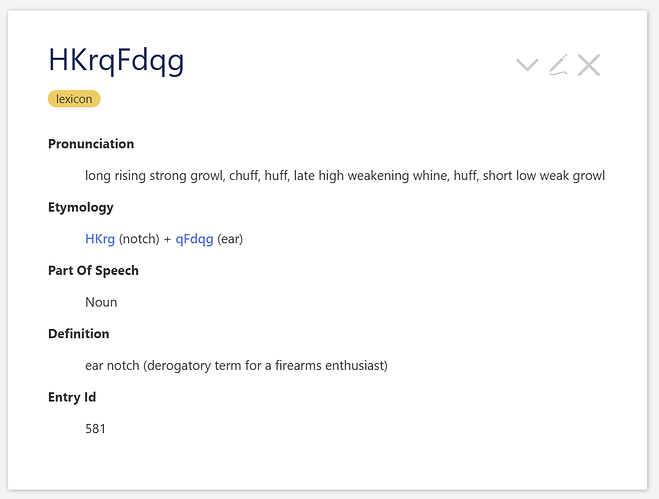I am new to TW, so new that I don’t know what questions to ask, so forgive me for info dumping. I don’t know what information is necessary and what isn’t.
I have a large (~780 notes) Obsidian vault that I am attempting to port to TW to make it more shareable online. It contains the lexicon of a constructed language I’m developing.
The markdown files have a more or less identical structure patterned after Wiktionary entries. The file name is the lemma (dictionary form) of the word. Each entry has at a minimum a definition marked by a level 1 heading. A pronunciation, etymology, and other sections such as usage notes and derived terms may or may not be present, each also marked with level 1 headings. The content of most sections is somewhat loosely formatted. All definitions have a part of speech as a level 2 heading, but may contain number lists, bullet lists, or separate paragraphs. Etymologies and derived terms sections usually contain links to other entries.
Obsidian uses markdown, which can be accommodated by TW using a plugin. It would seem straightforward to simply drag and drop the relevant .md files on top of TW to import them, and indeed that works well enough, but I’m slowly learning that that isn’t how you’re supposed to do things if you want to search, sort, and parse tiddlers. Instead, you’re encouraged to put info in fields.
I can parse these sections into fields by using the level 1 headings as field names and use wikitext for the values, but how do I present these tiddlers? How do I make them searchable? The search box on the sidebar only looks at titles and body text. How do I create new entries given that the field value boxes on the new tiddler creation menu don’t allow line breaks?
Permit me a digression to complain about a recurring problem I see in note taking software that TW also suffers from. I see this problem in Obsidian and Trillium as well. All these let you enter nice markup to structure a document with headings, lists, tables, etc, but they don’t take that structure into account when searching or parsing. I can’t search for text under a specific heading. I can’t search if a specific heading exists, I can’t transclude the text under a specific heading, or a specific table etc.

